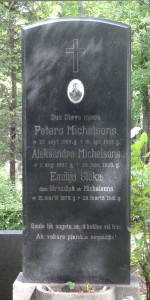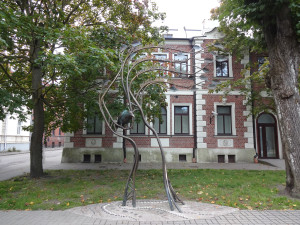On this week’s edition of Mappy Monday, we are taking a trip across Latvia’s northern border into Estonia! I know I’ve talked a lot about Estonia on this blog recently, and there’s a reason for that – the histories are so intertwined, the record types are similar, and there is a lot of crossover in terms of population – all of which you can read about in my series on Finnic influences in Latvia, which you can start reading here and then go back through the other links provided.
Today, of course, we’re focusing on some aspects of geography – Estonian placenames that are important for people investigating Latvian roots to know, since they could very well come up.
Locating places in Estonia from Latvian documents isn’t always easy – when a place name has been put through several different languages, it might end up coming out looking quite different to the name you started with. Typically, Estonian place names came into Latvian via German, but sometimes directly from Estonian as well.
First, we’ll look at the bigger cities, since these were places that Latvians were likely to go. The main one is Tartu, in southeastern Estonia, since it is known for its university, where many Latvians studied in the 19th century. In Latvian, the city is called TÄ“rbata, which comes from the original Estonian name Tarbatu. The name used in German, Swedish and Polish also derives from this original Estonian name, and thus it most commonly appears on maps as Dorpat. In Russian, the city was sometimes known as Дерпт (Derpt) – thus also from the same root – but more commonly as Юрьев (Yuryev), the name of an ancient prince of Rus.
The capital of Estonia, on the north coast, is Tallinn – rendered in Latvian as Tallina. In older records, the Latvian name might appear as RÄ“vele – taken from the German, Swedish and Danish name of Reval. It had many different names throughout history, which you can explore in the Wikipedia entry here.
Closest to Latvia is the seaside town of Pärnu – the names for this city are all closely related, not varying too much from the Estonian – PÄ“rnava in Latvian, Pernau in German and Пернов (Pernov) in Russian.
Another important place in Estonia as it relates to Latvia – because many Estonian migrants to Latvian territory originated there – is the island of Saaremaa. Residents of Saaremaa had regular contacts with coastal communities of Livonians around the Cape of Kolka, and also contributed a number of migrants to the city of RÄ«ga (though how they traveled to RÄ«ga – by land or by water – I am not certain). Saaremaa is known in Swedish and German as Ösel, and the similar Øsel in Danish. Russian also used a similar name, Ðзел (Ezel). In Latvian, it is known as SÄmsala – but take care in old documents, because even in Latvian it could be referred to using the German or Estonian name, or sometimes a portmanteau of several of the above languages.
In terms of parishes, there are way too many to name – but you can look at this Estonian Wikipedia page that lists many of the estates in Estonia. “Nimi” will have the modern name, “Saksakeelne nimi” is the old German name, and then the next two will list the historical administrative district and the modern administrative district respectively. “Mõis” is the Estonian word for “manor/estate”, from the same root as the Latvian “muiža”.
Next week we will cross the southern border! There were a lot of Latvians living in Lithuania as well, so this is important to look at too!


